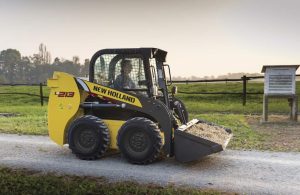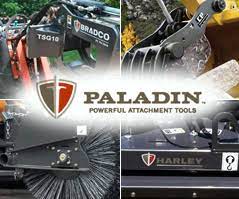Today’s Skid Steers Offer Capability, Versatility, Power & Comfort
 Developed over 50 years ago and initially for a single use — mostly on farms — skid steers have become multifunctional, high-demand machines in today’s construction and agricultural industries.
Developed over 50 years ago and initially for a single use — mostly on farms — skid steers have become multifunctional, high-demand machines in today’s construction and agricultural industries.
Originating in 1956 by brothers Louis and Cyril Keller, the first skid steer was a simple machine designed for the sole purpose of transporting turkey manure out of barns. As with most things, the skid steer changed and evolved gradually over time. In fact, the only similarities today’s skid steers share with the original design are a front loader feature and outstanding maneuverability. As a result of their modern-day complexity, skid steers are incredibily in-demand, desired and useful machines; however, because of this, potential buyers sometimes face an array of challenges when in the market for one.
Here are some key factors to consider when choosing the best machine for your specific needs:
|
Radial Lift |
Vertical Lift |
|
|
No matter which skid steer you choose, operator comfort will likely be a commonality amongst all makes and models. It is crucial, nonetheless, as it aids in operator longevity in cabs and thus increased productivity. Some operator comfort options include enclosed and pressurized cabs, HVAC, and ride-control features.
A wider range of options, however, exists within the category of control types. Some varieties include traditional hand levers and foot pedals, or newer-style joystick controls.
 While modern-day skid steers are versatile machines just on their own, their corresponding attachments — which can total over 50, like in New Holland’s lineup — make their capability endless. (i.e. Brooms, Sweepers & Collectors, Foresty, Cutting Heads, Landscape Power Rakes, Forks, Bale Spears, Grapples, as well as snow removal attachments such as buckets, blows, and pushers.) As a result, it is important to have in mind the types of attachments you’ll be using prior to purchasing the skid steer itself. This enables you to be able to purchase a machine with the appropriate operating capacity, hydraulic flow and pressure, and other miscellaneous performance attributes that will properly support your choice of attachments.
While modern-day skid steers are versatile machines just on their own, their corresponding attachments — which can total over 50, like in New Holland’s lineup — make their capability endless. (i.e. Brooms, Sweepers & Collectors, Foresty, Cutting Heads, Landscape Power Rakes, Forks, Bale Spears, Grapples, as well as snow removal attachments such as buckets, blows, and pushers.) As a result, it is important to have in mind the types of attachments you’ll be using prior to purchasing the skid steer itself. This enables you to be able to purchase a machine with the appropriate operating capacity, hydraulic flow and pressure, and other miscellaneous performance attributes that will properly support your choice of attachments.
Ultimately, today’s skid steers, having transformed a great deal over past decades, are some of the most powerful, versatile, and comfortable machines in today’s market. Their overwhelming capability will fulfill your construction and agricultural needs — and more.
If you’re in the market for a skid steer, check out the powerful lineup here at Tracey Road Equipment. You’ll be sure to find the right one to get the job done!
And, as always, keep us in mind for all of your skid steer’s parts, service, and maintenance needs — we are right at your fingertips for the life of your skid steer. Or, if the option of a short-term use of a skid steer better suits your needs, then of course, we rent that!
